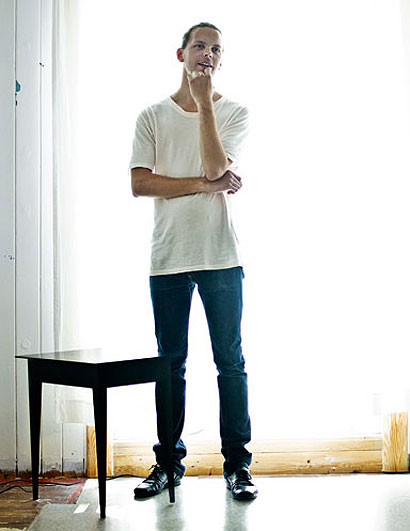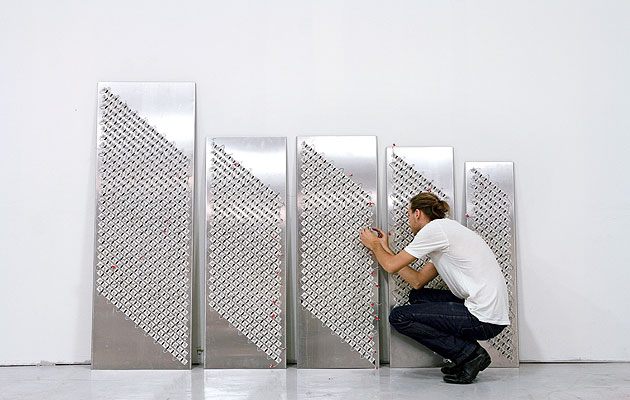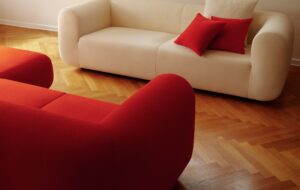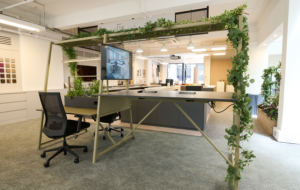|
Daniel Rybakken is a designer with a singular mission. He wants to trick us into thinking it’s sunny outside when it’s not, so he creates artificial windows, false patches of sunlight – whatever he can – to do so. The Norwegian designer’s handful of projects have all won awards so far, racking up column inches in magazines and leading to a commission to design the foyer of a high-profile office building in Stockholm – not bad for a concept he developed aged 16 in a small box room in his mother’s house in Oslo. By day, light would stream into this room through large double glass doors and “it was uplifting being there”, says Rybakken. But when the Nordic winter hit, living below a gloomy overhead light brought a real mood change. “I felt tired, alone and claustrophobic,” he says. “Then, I started wondering why we still make lampshades to decorate bulbs rather than designing the light itself – the bulb has been around for 100 years, yet its design has hardly evolved.” So Rybakken started experimenting. “I bought some light tubes, placed them behind the curtains at night and lit them – it looked like daylight was coming through,” he says. “It’s so simple – you get subconscious information that something is outside, there is a perceived sensation of larger space that makes you feel not so enclosed or lonely.” Daylight Comes Sideways, Rybakken’s first project, stems directly from this early trial. Comprising a false window in the form of a bright LED screen, it plays a blurry image of a swaying treetop on a loop. But while the idea satisfied the critics, it didn’t satisfy the designer. “It was ambient lighting,” says Rybakken. “It was another way to light a room – you could see it was a lamp. I wanted to make something more believable.” Rybakken then decided to design a shadow. His Subconscious Effect of Daylight table projects the image of a shadow onto the floor, to make you think one of its legs has been caught in a ray of light. With the projector hidden under the table, only the designer’s name in the projection reveals the piece as a tease. But it’s in his most recent project, Surface Daylight, that Rybakken’s concept gets to really stretch its legs – and the designer decided not to reveal his trickery to the viewer this time. Rybakken was commissioned by Stockholm-based property company Vasakronan to design an office foyer that draws people into the building. He clad the two-storey space in Corian and incorporated identical blocks of LEDs embedded into aluminium sheets behind five of the Corian slabs – giving the impression of natural patches of sunlight hitting the walls. “My dream scenario is that people won’t recognise it until they stay late at work, and they’ll be aware it’s raining outside but it’s sunny in here – that’s the kind of confusion I want,” says Rybakken. Because of his experimental approach it would be easy to pigeonhole Rybakken as a conceptual designer more at home in gallery shows, so it is exciting that neither he nor the manufacturers who have expressed interest so far – including Ligne Roset and Established & Sons – see it that way. Although the work originated in the gloomy winters of northern Europe, Rybakken now has private requests coming in from Spain. Having achieved his ultimate daylight-faking goal with the offices in Stockholm, are there any more new ideas? “I think the concept could work everywhere from subways to art galleries,” says Rybakken. “I want to do new, innovative things – not just with light. There are lots of things that can be done with faking daylight, and I like that it is becoming my specialty.”
Rybakken with his Subconscious Effect of Daylight table (image: Daniel Rybakken) |
Words Anna Bates |
|
|
||
|
Aluminium sheet, which slots behind a slab of CNC-milled Corian (image: Daniel Rybakken) |
||


















